23 November, 2003
Penguin Parade
Words can simply not describe what I experienced
today. Therefore I will briefly set the stage for
you and then let the photos do the talking for
me. In this case the old cliché is true - a
picture is worth a thousand words to describe
Antarctica.
After a big, hot breakfast, we piled into our
Extreme Cold Weather (ECW) gear and headed out to
the Skidoos parked on the sea ice. Muffled under
a layer of polypropylene long underwear, a layer
of fleece, and a big red parka and bib overalls,
I topped the ensemble off with a balaclava liner
that would cover my cheeks and nose, a wool hat,
a neck gaitor to keep out drafts, my fur-lined
parka hood, glove liners, fur-backed gloves, and
my big FDX boots. I hoped that I was dressed for
whatever Antarctica had in store for me today.
Pulling my goggles down over my head I checked
that no skin was exposed (Figure 1) as we would
be zipping along at 40 miles per hour across the
sea ice.
Even with all these clothes, the first blast of
air bit right through the cloth on my face. The
air smelled icy and stung my lips for a few
minutes, until my face just lost feeling. My
frosty breath would have fogged my glacier
glasses so I was glad I chose goggles. With one
last snuffle, I was zipping across the sea ice
for a day of exploring.
Enjoy the photos! I hope they convey even a
fraction of how awesome this place is. This was
truly one of the most awe-inspiring and memorable
days of my life. I know now how Antarctica gets
in your blood and you have to keep coming back
for more . . .
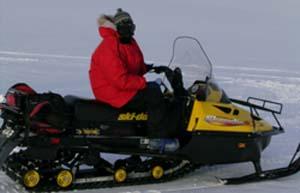
1. Figure 1 – I’m ready to ride. I bundled up in three layers of polypropylene, fleece, and my big red parka for our full day out on skidoos.
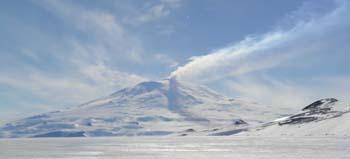
2. Figure 2 - Mt. Erebus's plume was easily visible today, streaming out toward McMurdo Station.
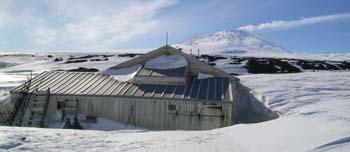
3. Figure 3 – Robert Falcon Scott’s second hut (1910-1913) is located at Cape Evans on a “beach” that is sometimes accessible when the sea ice breaks up. This is the location where half of Scott’s team waited for the return of the doomed South Pole expedition. Mt. Erebus looms in the background.

4. Figure 4 - Brian Winter peeks in the window of Scott's Hut. Notice the snow drifts along the wall and the very low roof.

5. Figure 5 - I hope this image imparts a sense of how vast the sea ice is and the isolation of Scott's hut, which is nearly buried to the roof in a drift.

6. Figure 6 - The grim reality of early polar exploration set in while looking at the cross memorializing the three men in Shackleton's 1914-1916 trans-Antarctic expedition who died while waiting for Shackleton's crew to arrive. The men died in the same vicinity as Scott's Hut.

7. Figure 7 - This is a 360-degree panoramic view of Cape Evans from a hill above Scott's Hut. The image has stretched flat.

8. Figure 8 - A view of the Barnes Glacier that extends out toward the sea from the base of Mt. Erebus. The cliff (approximately 200 feet high) marks the boundary between glacier and sea ice
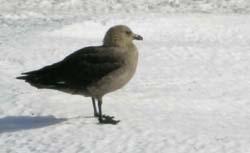
9. Figure 9 - As we parked our Skidoos at Cape Royds we were inspected by one of the many bold Skuas, the bold Antarctic gulls that scrounge a meager living off the ice by eating anything they can find.
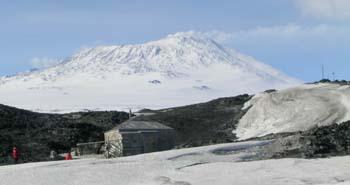
10. Figure 10 - Shackleton's Hut (from his 1907-1909 expedition before the Endurance expedition) is situated at Cape Royds, nestled below Mt. Erebus.
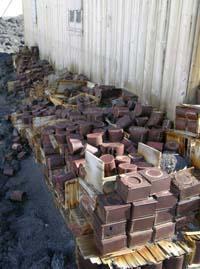
11. Figure 11 - Provisions still sit outside of Shackleton's Hut. The site is a protected historic site, so even the refuse piles outside the hut are preserved.
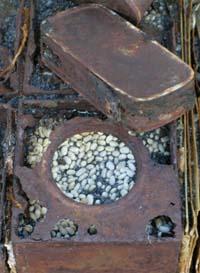
12. Figure 12 - Tin cans of beans and jerky (perhaps?) are rusting open behind Shackleton's hut, but their contents are still well preserved.

13. Figure 13 - Even 90 year old jars of table salt sit stacked neatly behind the hut, their labels still visible through the glass.

14. Figure 14 - Looking out from Shackleton's hut, you can view the penguin colony at Cape Royds. Thousands of penguins flock onto this cape to mate and nest. Each tiny black spot in the photo is an Adelie penguin.
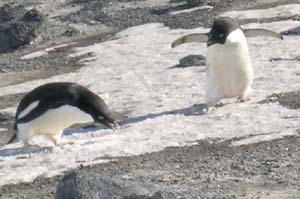
15. Figure 15 - Adelie penguins at Cape Royds. Adelies search for pebbles to build their nests. The males and females take turns incubating the eggs.
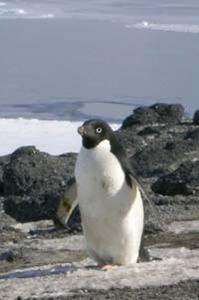
16. Figure 16 - Yet another adorable Adelie.
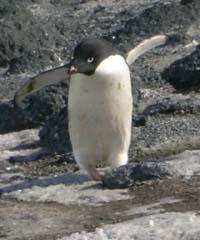
17. Figure 17 - Forgive my obsession, but these guys are too cute to not show a few extra photos!
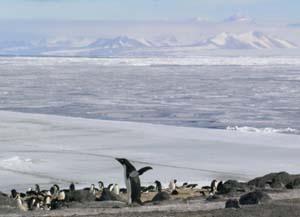
18. Figure 18 - Beyond the Adelie rookery the sea ice starts to break up as summer progresses. As leads open, waddling penguins are forced to hop about as they move across the ice. In some cases, the penguins run about frantically looking for a way to cross small, waterless crevasses.

19. Figure 19 - Three Adelies have waddled to the edge of the ice sheet and prepare to go fishing in the open water. As the sea ice breaks up, small beaches are accessible further along the shoreline, allowing the early explorers to establish several camps along the coast.

20. Figure 20 - A 270-degree panoramic view of the Cape Royds colony. The Adelie rookery is a loud, busy place with penguins constantly displaying with head up and arms flapping, shouting their mating call, and squabbling over the best nest-pebbles.

21. Figure 21 - We had missed seeing the Emperor penguins at the Cape Royds rookery and were delighted to find a baker's dozen Emperors marching along the Skidoo trail. Where they are going is anyone's guess.
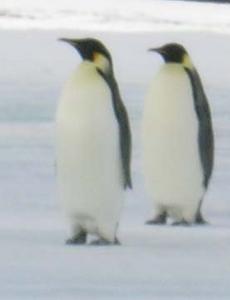
22. Figure 22 - The Emperors were much louder than the Adelies and treated us to quite a concert as they marched about on the ice, briefly inspecting snowmobiles and bamboo route flags, and then moved on. A pair of inquisitive Emperors desperately wanted to come and check us out, but their comrades continued waddling on.
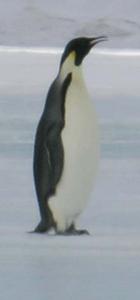
23. Figure 23 - With a final farewell from our Emperor friend we called it a day. What a day it was!
Contact the TEA in the field at
.
If you cannot connect through your browser, copy the
TEA's e-mail address in the "To:" line of
your favorite e-mail package.
|
